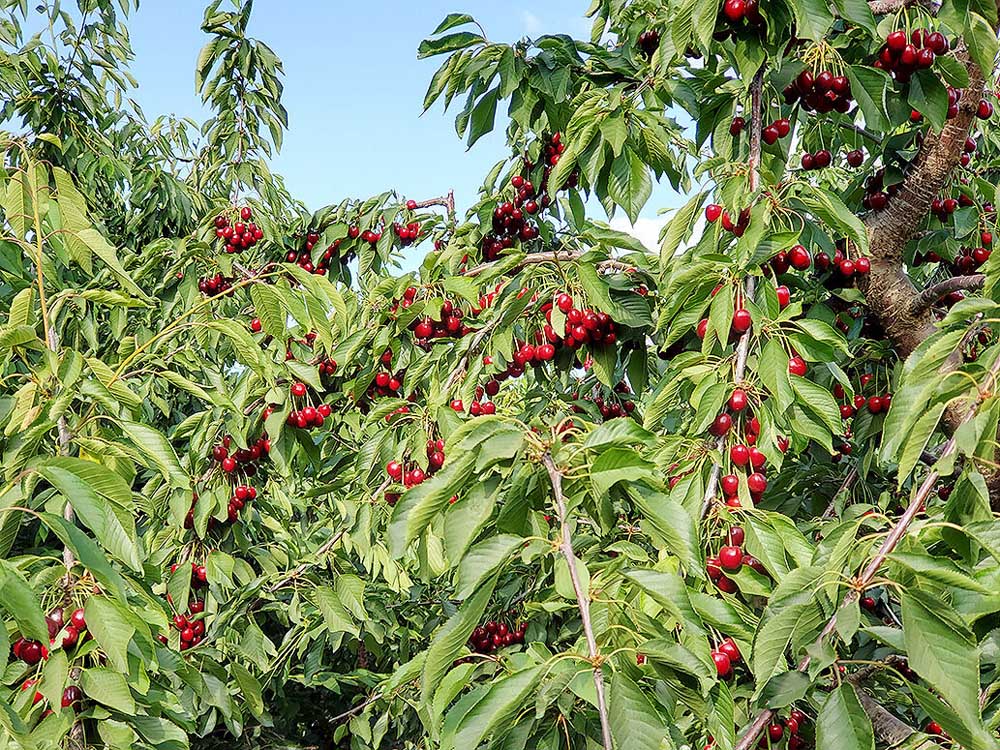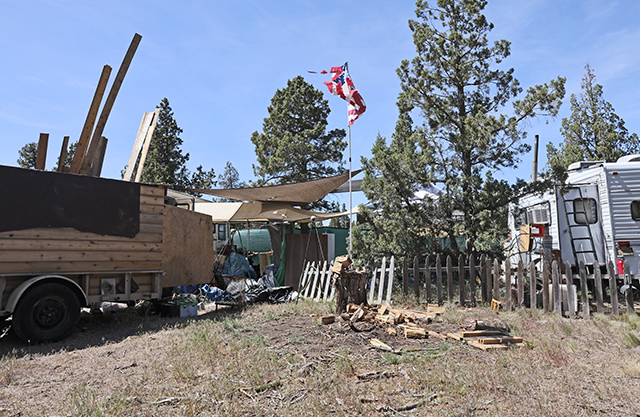Oregon cherry growers weather rain, COVID-19 during harvest
Published 4:30 pm Monday, July 20, 2020

- Mid-Columbia cherry growers are optimistic as harvest winds down. Solid prices have helped offset lower pack-out of certain varieties for fresh markets and higher costs to comply with emergency COVID-19 worker protections.
THE DALLES — This year’s cherry harvest began with a double dose of uncertainty at Polehn Farms in the Columbia River Gorge.
First, rain fell just a few days before picking started June 10, raising concerns over fruit cracking due to excessive water uptake.
Then, with the coronavirus pandemic spreading, the farm did not hear right away from its usual crews of migrant field workers.
Despite the challenges, Oregon cherry growers say they remain optimistic as harvest winds down. Solid prices have helped offset smaller pack-out of some varieties for fresh markets and higher costs to comply with COVID-19 worker protections.
Polehn Farms grows about 430 acres of cherries near The Dalles and operates a packing house. The Mid-Columbia region has more than 82% of Oregon’s 14,884 total cherry acreage, split mostly between Wasco and Hood River counties.
Jeanette Gryder, human resources and accounts manager at Polehn Farms, said the farm typically receives calls from workers to reserve cabins at the farm in April and May, but this year the calls came later than usual.
When they finally did, they were able to hire crews within the first three or four days after the camps opened June 5, she said.
“People were wanting to work, and willing to do what needed to be done to work,” Gryder said.
That led to the industry’s next challenge — how to safely house hundreds of workers living and sleeping in the camps during the eight-week harvest while stopping the spread of COVID-19.
The state’s Occupational Safety and Health Administration issued temporary rules in April requiring labor-intensive farms to provide more portable restrooms, hand washing stations and personal protective equipment for workers, along with limiting the number of unrelated occupants in cabins to reduce transmission of the virus.
Gryder said they cut occupancy in some cabins, but were otherwise able to maximize their space by hanging barriers between beds and keeping family members together. Unlike the pear industry, cherry growers rely less on H-2A foreign guestworkers and more on seasonal workers from California who typically travel to Oregon as family units.
“We have steady groups who come up every year,” Gryder said. “For the most part, it was people who were coming back and who were related who were staying in the cabins.”
Still, the cost was substantial for some operations. Brenda Thomas, president of Orchard View Cherries in The Dalles, estimates it spent between $1 million and $1.5 million complying with the rules.
Thomas said the farm was able to recoup some of those costs from the state, which provided $30 million to reimburse farms.
According to the National Agricultural Statistics Service, Oregon was predicted to harvest 61,000 tons of cherries this year, up slightly from 57,200 tons in 2019.
Washington, the nation’s largest cherry producer, was expected to see a dip in production from 239,000 tons in 2019 to 210,000 tons this year. That’s due to frost damage last winter and early spring.
That has helped keep prices higher than average for growers, Thomas said. Whether it is enough to come out ahead remains to be determined.
“Cherries are still moving at good pricing. That’s been a good thing,” she said. “We’re not done yet. We want to go through the finish line strong.”
Ashley Thompson, an assistant professor of horticulture and tree fruit specialist for Oregon State University Extension, was tracking fruit cracking and “X disease” transmitted by leafhoppers and other pests that has prompted growers to remove hundreds of infected trees.
This year, Thompson added the role of agriculture emergency response coordinator for Wasco County, surveying growers and communicating their needs to state agencies and local health departments.
“When growers would start to panic, they would reach out to me,” Thompson said.
Thompson was able to help collect more than 4,000 face masks to distribute to farms, as well as cleaning supplies and additional housing for quarantined workers. She said that has helped to contain outbreaks at farms and packing houses to small pockets.
The Oregon Health Authority reports 5 people tested positive for COVID-19 at Polehn Farms, and 11 people tested positive at Orchard View.
Elsewhere in Wasco County, 8 people tested positive at Tenneson Orchards and 6 tested positive at McClaskey Orchards in The Dalles.
”I think things were pretty successful here,” Thompson said.
Looking at cherry harvest as a dry run for pear harvest this fall, Thompson said continued coordination between farms and agencies will be key.
”I think that really makes you successful,” she said. “If everybody is out there trying to do their own thing, that’s where we’re really going to suffer.”






